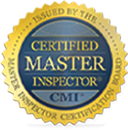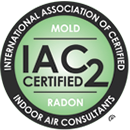Montana Energy Code: What Homebuyers and Agents Should Know
When it comes to new construction homes in Montana, it's often assumed that unless you're building within a jurisdiction with an established Building Department there are simply no codes or standards for builders to follow. This is incorrect. In fact, new construction anywhere in the state is required to meet or exceed the state adopted building codes. However, the variability lies in code enforcement, with many rural areas of the state lacking the resources to uphold building standards. Nevertheless, Montana builders are still responsible for ensuring their work meets the states minimum standards, including the Montana Energy Code. New builds must meet the Montana Energy Code, which sets statewide minimum standards for energy-efficient design and construction. When these requirements are met, homeowners benefit from lower utility bills, better indoor comfort, and a healthier living environment.
For homebuyers—and the real estate professionals guiding them—understanding the key inspection checkpoints helps verify quality, durability, and long-term efficiency. Here’s what a qualified home inspector or third-party verifier typically looks for on a new build as it pertains to the Energy Code.
1. The Paper Trail: Documentation That Must Be Present
Before ever looking at insulation or mechanical systems, inspectors can start with the required documentation:
• Energy Code Compliance Label
Every new home must have a completed Energy Code Compliance Label placed on or inside the electrical panel. This label confirms the builder certified the home to meet statewide minimum energy standards.
• What the Label Should List
The label needs to show:
- Insulation R-values
- Window and door efficiency ratings
- Water heater efficiency
- Heating and cooling equipment efficiencies
• REScheck™ Documentation (optional)
Builders can follow the standard “energy code path,” or they can meet the requirements using REScheck™ software.
If insulation or window ratings appear lower than the standard requirements (for example, above-grade walls less than R-21 or windows worse than U-0.30), the inspector can request a copy of the REScheck™ report to verify compliance through an alternative path.
2. Air Sealing & Tightness Testing (The Blower Door Requirement)
Air leakage can account for 10–30% of total energy loss in a home. The code requires homes to be both sealed and mechanically ventilated for healthy indoor air.
How inspectors verify tightness:
1. Visual confirmation
Inspectors look for proper air sealing around common leakage points—windows, doors, attic penetrations, exterior wall outlets, plumbing and electrical penetrations, and utility chases.
2. Blower door test results
Montana requires blower door testing. Inspectors verify the test results on the compliance label.
- Homes must achieve 4 ACH50 or less (air changes per hour at 50 Pascals).
- Because modern homes are intentionally tight, inspectors also verify that a mechanical ventilation system is installed to ensure healthy indoor air.
3. Insulation Benchmarks
Inspectors compare the insulation values listed on the Energy Code Compliance Label to the minimum requirements set by the Montana Energy Code. Ceilings and attics must have at least R-60, although R-49 is acceptable if energy trusses are used and the insulation fully covers the ceiling. Inspectors also confirm that the attic access hatch is insulated and sealed. Above-grade exterior walls must be R-21, and if the value is lower, the builder must provide REScheck™ documentation showing the home still meets code. Basement walls must have either R-15 continuous insulation or R-19 batts in framed walls. The insulation does not have to be covered with drywall or finishing material, but it must be installed without gaps. Rim joists and floor systems must be both insulated and air-sealed, typically using spray foam or rigid foam that is sealed at the edges. In heated crawlspaces, the crawlspace walls are insulated, the ground must be covered with a sealed plastic vapor barrier, and any crawlspace vents must be closed and sealed.
Pro Tip:
Using an infrared (IR) camera during a blower door test can reveal hidden voids, compression, or air leakage by showing surface temperature differences.
4. Mechanical Systems & Component Efficiency
Efficient equipment isn’t enough—it must also be installed correctly. Inspectors commonly check:
- Heating/Cooling system sizing
Must be properly sized using approved methods like ACCA Manual S & J. Oversized or undersized equipment leads to comfort issues and reduced lifespan.
- Thermostats
Furnaces require programmable thermostats.
Hot water boilers require an outdoor reset control.
- Duct sealing
All duct seams must be sealed with mastic or approved tape (standard duct tape does not meet code).
- Duct testing & insulation
If any part of the duct system runs through unconditioned areas (attic, crawlspace, garage), a duct tightness test is required.
Supply ducts outside the conditioned space must have at least R-8 insulatio.
- Windows
Must meet a U-factor of 0.30 or better. The lower the U-factor, the more efficient the window.
- Lighting
All permanent fixtures must use high-efficiency bulbs (LED, CFL, etc.).
Why This Matters
When these elements are verified, buyers gain confidence that the home is built for long-term performance—not just day-one occupancy. Reduced utility costs, healthier indoor air, and higher comfort are direct benefits of a code-compliant structure.








